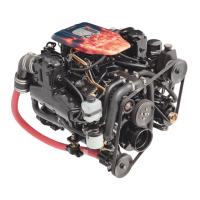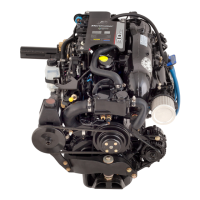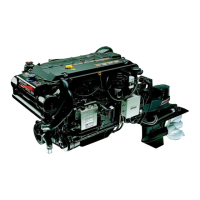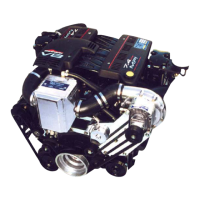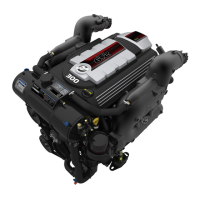Introduction
Before You Begin Troubleshooting
It is important to be methodical when diagnosing an electronically controlled engine. Before you get started, consider the
following:
1.
Use the provided Diagnostic Roadmap to stay on a logical path.
2. Make sure that you completely understand the customer complaint before proceeding. Additional questions and
clarifications at the beginning will save time and frustration.
3. While it may be logistically difficult, time and effort spent duplicating the customer complaint ensures that you fully
understand the problem and that it is real. Failing to do so often results in lost time and unnecessary expenses, as well as
increased customer frustration if you are unable to correct the problem in your first attempt.
4.
The CDS G3 service tool is required to access all of the available information in the PCM 112 controller. Refer to CDS G3
Service Tool. The CDS G3 service tool is purchased through Mercury Parts and Accessories.
5. PCM 112 engines have a generic onboard diagnostics ‑ marine (OBD‑M) data connector that allows connection of generic
J1939 scan tools.
Situational Awareness
Always be aware of the actual conditions under which the engine is operating and compare them with the conditions that the
sensors are transmitting to the PCM.
The PCM recognizes abnormally high or low voltage signals as sensor failures and stores a fault message to that effect. If a
sensor fails internally, but transmits a signal that the PCM recognizes as acceptable, the PCM may not make the appropriate
adjustments.
For example, if a sensor indicates that the air temperature is 32 °C (90 °F) instead of an actual temperature of 10 °C (50 °F), or
if the sensor is telling the PCM that the engine is warm when it is actually cold, the engine may not operate properly. Being
aware of the situation and making comparisons to actual conditions can point out failed sensors not recognized by the PCM.
General Troubleshooting Guidelines
The diagnostic process is seen by many as being as much art as it is science; however, there's nothing mysterious about it. A
methodological approach, combined with experience, knowledge, and the right tools, can eliminate guesswork from the
process.
1. Talk to the customer to get as much information as possible about the complaint. There is a reason the boat was brought
in. Did a warning light come on or alarm sound? When did the problem first start? At what speeds does it occur?
2. Verify the symptom, if possible while the customer is present.
3. Perform a brief visual inspection.
4.
Scan the PCM 112 for faults. For a list of applicable faults, refer to CDS G3 Fault List. For fault troubleshooting
information, refer to the PCM 112 Service Manual.
• Fix any active faults first.
• Examine the freeze frame buffers, which do not relate to active or inactive faults. Be careful about faults that
happened a long time ago and only happened once or twice.
• Continue to troubleshoot faults until you can clear them and they don’t come back after a test run on the water.
5.
If there are no faults but a symptom exists, then perform an in‑depth visual/physical inspection. Refer to Visual/Physical
Check. Basically, you must:
• Isolate the problem to the boat or the engine.
i. Use a shop or other portable fuel tank that has known good fuel and no restrictions.
ii. For non‑DTS engines, use a key switch harness at the main harness connector. Remove all leads from the
battery except those required by the engine.
iii. Use all of your senses. Listen, look, touch, and smell to determine if the engine is running correctly.
• If the problem is associated with the engine, isolate the problem to the different systems (starting, charging, ignition,
fuel, intake, exhaust, or mechanical systems).
i. Verify the integrity of the electrical system (cranking and charging).
ii. Verify the integrity of the ignition system. Ensure that spark is present at the correct time.
iii. Verify the integrity of the fuel system (correct pressure at the rail, and each injector fires when commanded).
iv. Verify the integrity of the engine’s mechanical (compression) components.
6. Do not chase a problem that does not exist. If there are no faults and you cannot replicate the customer's complaint, it may
be more prudent to return the boat to service.
Troubleshooting
Page 1D-2 © 2016 Mercury Marine 90-8M0099748 eng DECEMBER 2015
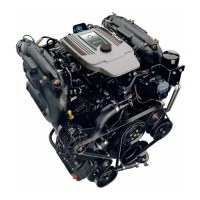
